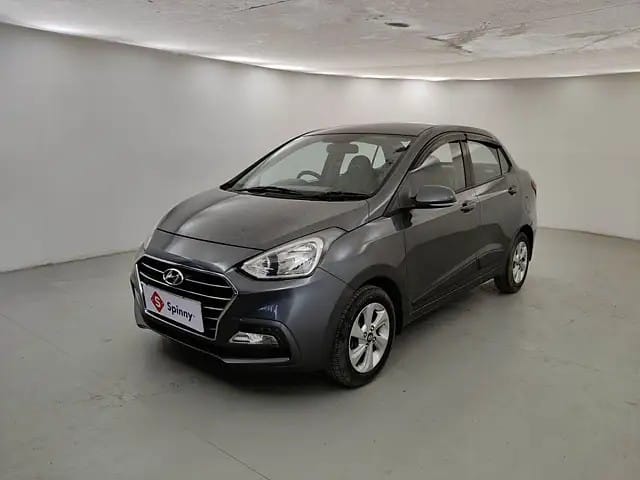Purchasing a used car is a practical and cost-effective option that lets you own a car without the exorbitant price tag of a brand-new vehicle. But buying a used car has to be done with caution to avoid the concealed problems and make a good purchase. Whether you need a luxury car, a mid-range sedan, or an economy car, this book will walk you through the process efficiently.
Why Buying a Used Car is A Great Idea
1. Significant Cost Savings
Used vehicles are a lot less expensive than brand-new vehicles. The value of a brand-new vehicle goes down by as much as 20-30% in the first year alone and keeps going down year by year. By purchasing a used car, you allow the original owner to suffer the brunt of the first depreciation so you can save on it.
Example:
A brand-new Mercedes-Benz E-Class will set you back around ₹80 lakhs, but a 3-year-old car in perfect condition will cost you around ₹50 lakhs, which is a huge saving.
2. Lower Depreciation
New cars depreciate very fast in the first few years, losing almost half their value in 3-4 years. When you buy a used car, it has already gone through the initial depreciation, so the value will be more consistent with time.
3. Range of Options
The used car market offers a variety of models, brands, and segments. Whether you like luxury sedans and cars or budget small cars, you will find a car that suits your budget and your choice.
Example:
If you are looking for a trusty mid-size sedan such as the Honda City, you can look through several models of different features and prices in the used market.
Step-by-Step Guide to Purchasing a Used Vehicle
1. Set a Realistic Budget
Begin with a realistic budget that not only covers the cost of acquisition but also other related costs such as:
- Insurance
- Registration charges
- Taxes
- Regular maintenance
- Potential solutions
Tip:
For luxury cars, add the cost of advanced-technology maintenance, which will be significantly greater than that of such mid-range or budget cars.
2. Study Widely
Do extensive research on the car models that you would like to consider. Search for:
- Feedback from other owners
- Common issues mentioned for the make and model
- Average maintenance cost
- Fuel economy and availability of spare parts
Example:
If you are searching for a second-hand BMW 5 Series, research its service history, faults, and maintenance costs. BMWs have high maintenance costs that should be taken into consideration.
3. Verify the Seller
It is advisable to buy from a reputable source to avoid scams or hidden problems. You have a choice:
- Certified Pre-Owned (CPO) Dealers: They are inspected extensively and are warranted.
- Online Sites: Sites like Spinny and Cars24 offer authenticated listings and car history reports.
- Direct from Owners: Buying directly from the owner might be cheaper, but ensure that the documents are genuine.
Tip:
Shun aggressive sales techniques that may pressure you into an impulsive decision.
4. Check Vehicle History
A full car history will tell you a lot about the condition of the car. Check for:
- Past ownership history
- Accident history
- Service and maintenance histories
- Loan clearance
Example:
A vehicle with numerous owners or recurrent repairs can suggest reliability problems. Always get a comprehensive history report prior to going ahead.
5. Inspect the Car Carefully
When physically inspecting the car, make sure to check both the interior and exterior.
Exterior Inspection:
- Look for dents, scratches, and rust patches.
- Check uniform paint color on panels.
- Inspect the body panel gaps; uneven gaps can indicate a history of accidents or repairs.
Interior Inspection:
- Look for tears or stains on upholstery.
- Test the electric components such as the air conditioner, stereo, and infotainment system.
- Look for warning lights on the dashboard.
Tip:
For luxury cars, check more advanced features like parking sensors, navigation systems, and adaptive cruise control to ensure they are fully operational.
6. Check Mileage
Odometer fraud is common in the used car market. Compare the age of the car to the mileage and ensure consistency.
- Normal use is approximately 10,000 miles (16,000 km) per year.
- Very low mileage on a vintage car can indicate that the odometer has been rolled back.
Example:
If a 5-year-old Honda Civic reads just 20,000 km on the odometer, it’s a flag that needs closer inspection.
7. Take It for a Spin
A test drive will allow you to assess the condition and performance of the car. Observe:
- Acceleration and braking response
- Steer alignment and stability
- Suspension and handling on bumpy roads
- Noise levels from the engine and tyres
Tip:
For high-end cars, test all driving modes to ensure smooth performance.
8. Check Tyres and Suspension
Check tyre tread depth and wear patterns. Squealing tyre wear could indicate alignment or suspension issues. Check for squeaks or instability in the suspension.
9. See a Mechanic
Even if you are knowledgeable about motors, it’s always best to let a good mechanic inspect the car for hidden problems that may not be visible with a quick look.
Example:
A technician can identify possible engine issues, faulty brakes, and undercarriage damage that can be missed in a standard inspection.
Special Cases in Various Types of Cars
Luxury Vehicles: Special Attention Needed
Luxury vehicles give a high-end experience, but with more responsibility:

- Depreciation Benefit: The luxury vehicles depreciate more quickly and become inexpensive in the secondary market.
- Maintenance Costs: High-tech products usually require professional maintenance, which is costly.
- Service History: Ensure that the former owner stuck to routine service schedules.
Example:
An older Audi A6 may appear to be a bargain, but repair and maintenance costs can be much higher than an economy car.
Mid-Range Vehicles: Balanced Performance and Price Accessibility
Mid-range sedans such as Honda City and Hyundai Verna provide a compromise between performance, comfort, and cost:

- Select models with a proven reliability record.
- Prioritize cars with a full service history to prevent expensive surprises.
Budget Cars: Affordable and Dependable
If you are on a tight budget, settle for reliability rather than appearance. Older models from well-known brands can still provide satisfactory performance and longevity.

Example:
A used Maruti Suzuki Swift might not have sophisticated features but can give satisfactory performance for years if well taken care of.
Where to Buy a Second-Hand Car?
1. Online Marketplaces
Platforms like Spinny, Cars24, and OLX have verified listings with full histories. They are transparent and convenient on prices.
2. Certified Pre-Owned Dealers
They come with warranties and proper checks, ensuring your peace of mind.
3. Direct from Owners
It might be cheaper to buy from the owner directly, but make sure you scrutinize all the documents and thoroughly inspect the car.
Final Checklist Before Purchase
Before sealing the deal, make sure that you:
- Verify all the documents like the Registration Certificate (RC), insurance, and pollution certificate.
- Align the chassis number with the one on the registration documents.
- Ensure that there are no pending loans or liabilities against the vehicle.
- Negotiate any defects that have been discovered upon inspection.
Conclusion
Purchasing a used car—luxury, mid-range, or low-budget—can be a pleasant experience if done with prudence. By establishing a practical budget, investigating the models exhaustively, scrutinizing the vehicle thoroughly, and taking the help of experts, you can make a trouble-free and affordable buy. Make wise choices and have a dependable vehicle that suits your requirements without draining your purse..
Ready to Buy a Second-Hand Car with Confidence?
Explore expert tips, detailed guides, and trusted advice to make the right choice. Whether you’re eyeing a luxury sedan, a reliable mid-range vehicle, or a budget-friendly model, My Car Wisdom is here to guide you at every step.
Visit My Car Wisdom Now to get personalized recommendations, car reviews, and expert insights to ensure a smooth and hassle-free purchase!
Raja Yadav, the content writer at My Car Wisdom, brings a unique voice and style to our blog. With a knack for storytelling and a keen eye for detail, Raja ensures that every piece of content is informative, engaging, and easy to understand. His focus is on delivering high-quality articles that cater to both novice car owners and seasoned automotive enthusiasts.




